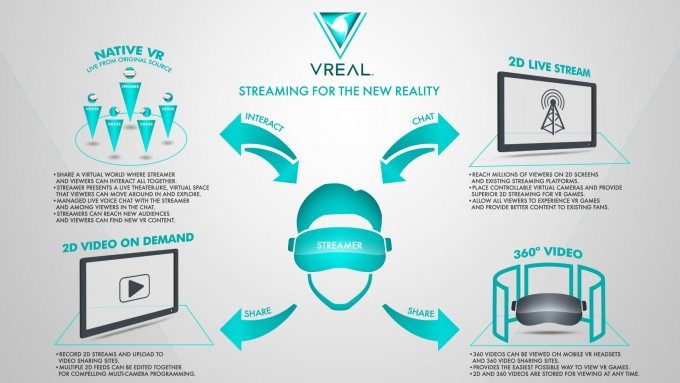Today VREAL is taking the shroud off of their VR livestreaming platform that puts viewers inside the game, right next to their favorite streamers. The unique mashup of virtual reality, game streaming, and social interaction feels like something we’ve simply not seen before.
First of all, what is VREAL? At its most basic, it’s an immersive livestreaming platform for gamers. Like Twitch, but for VR.
But that’s putting it far too simply. VREAL aims to not only allow streamers to effectively livestream VR games, it actually brings the audience inside of the game using virtual reality. So, for instance, you might have a livestreamer playing Surgeon Simulator in VR, while the viewers watching the streamer are wearing their own headsets and standing directly inside of Surgeon Simulator, right next to the streamer. Viewers can even move around the environment to see the action from any angle as it unfolds.

The company says they’ll support the HTC Vive and Oculus Rift. If you don’t happen to have a VR headset, VREAL also streams output that can be viewed on a flat monitor (through existing streaming platforms), as well as 360 videos that are viewable on flat monitors or less powerful VR headsets like Gear VR or Cardboard.
There’s also a social element. Viewers in the space could be seen or heard, if the streamer wishes. And viewers themselves could be visible and audible or hidden and silent to other viewers on the stream.
This approach from VREAL feels like something completely new. It has elements of VR, game streaming, and social interaction, but they’re stirred together in a complementary way that seems to open the door to a totally different form of interaction which blurs the line between the content creator and the viewer.
So how does it all work? Well, that’s VREAL’s secret sauce of course. What we know is that the platform isn’t merely streaming video footage of the virtual space to viewers. Instead, it is somehow syncing the environment of the streamer/host with that of the viewer. That means VR viewers are seeing real, crisp 3D geometry, and they’re able to move around the environment as if they were playing the VR game themselves.
Unlike traditional game streaming, VREAL requires game-specific integration through the company’s SDK. With plugins for Unity and Unreal, this may not be as big a hurdle as it sounds, provided the integration is as near to drag-and-drop on the developer’s end as possible. With VREAL hitting beta this summer, we’ll find out soon enough.







